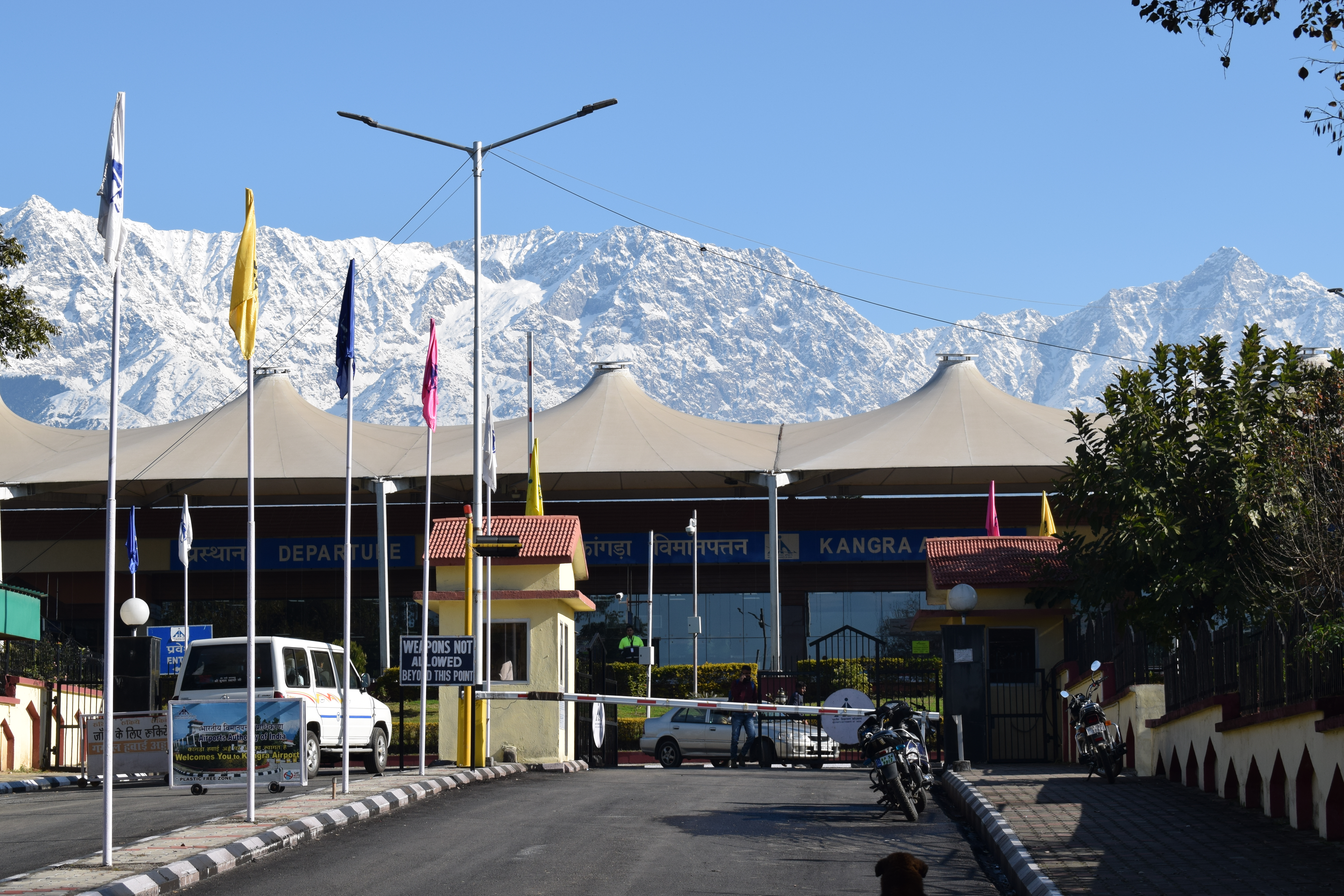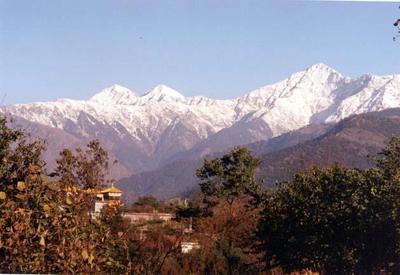|
Kangra (other)
Kangra may refer to: * Kangra district, a district of Himachal Pradesh, India *Kangra, Himachal Pradesh, a city and a municipal council in Kangra district now in Indian state of Himachal Pradesh * Kangra Fort, on the outskirts of Kangra *Kangra (Lok Sabha constituency), one of four parliamentary constituencies in Himachal Pradesh *Kangra Valley, a valley in Kangra district *Kangra-Lambagraon, a princely state in British India, in the present-day state of Himachal Pradesh *Kangra, Khyber Pakhtunkhwa Kangra colony is a township in union council Panian of Haripur district in Khyber Pakhtunkhwa province of Pakistan. Demographics Hindko language is the main language in this area that have 98% speakers in Kangra colony. Otherwise Pashtu and U ..., a town in the Khyber Pakhtunkhwa province of Pakistan * Kangra painting, a style originating in Kangra district See also * Kangri (other) {{Disambiguation, geo ... [...More Info...] [...Related Items...] OR: [Wikipedia] [Google] [Baidu] |
Kangra District
Kangra is the most populous district of the Indian state of Himachal Pradesh. Dharamshala is the administrative headquarters of the district. History Kangra is known for having the oldest serving Royal Dynasty in the world, the Katoch. In 1758, Raja Ghamand Chand was appointed ''nazim'' or governor of Jullundur Doab under the Afghans. Ghamand Chand was a brave and strong ruler who restored the prestige of Kangra. As he was unable to capture Kangra fort, he built another fort at Tira Sujanpur on the left bank of the Beas, almost opposite to Alampur on a hill overlooking the town. He died in 1774 and was succeeded by his son, Tegh Chand, who died too soon in 1775. Kangra was annexed by Maharaja Ranjit Singh's Sikh Empire in 1810. Kangra became a district of British India in 1846, when it was ceded to British India at the conclusion of the First Anglo-Sikh War. The British district included the present-day districts of Kangra, Hamirpur, Kullu, and Lahul and Spiti. Kangra Distr ... [...More Info...] [...Related Items...] OR: [Wikipedia] [Google] [Baidu] |
Kangra, Himachal Pradesh
Kangra is a city and a municipal council in Kangra district in the Indian state of Himachal Pradesh. It is also known as ''Nagarkot''. Meaning of Kangra Kangri word in Ladakh/Lahaul means snow on top of mountain. Since snow capped mountains are visible from the city of Kangra, therefore it is named Kangra (town of snow laden peaks). History Historically known as Kiraj and Trigarta,Blankinship, Khalid Y, "The End of Jihad State ", pp132 the town of Kangra was founded by Katoch Kshatriya Rajputs of Chandervanshi Lineage. The Katoch Rajas had a stronghold here, with a fort and lavish temples. Another ancient name of the city is Bhimagar and it was supposedly founded by Raja Bhim, younger brother of Kuru Emperor Yudhishthira of Indraprastha (now Delhi). The temple of Devi Vajreshwari was one of the oldest and wealthiest in northern India. It was destroyed, together with the fort and the town, by 1905 Kangra earthquake on 4 April 1905, when 1339 people died in this plac ... [...More Info...] [...Related Items...] OR: [Wikipedia] [Google] [Baidu] |
Kangra Fort
The Kangra Fort is located 20 kilometers from the town of Dharamsala on the outskirts of the town of Kangra, India. History Raja Dharam Chand submitted to the Mughal Ruler Akbar in 1556 and agreed to pay tribute, including, renouncing claims to the fort. But in 1620, Emperor Jahangir, killed that Katoch king, Raja Hari Chand and annexed the Kangra kingdom into the Mughal Empire. Under the leadership of Nawab Ali Khan and aided by Raja Jagat Singh, the fort was captured in 1620 and under Mughal rule until 1783. In 1621, Jahangir visited it and ordered the slaughter of a bullock there. A mosque was also built within the fort of Kangra. As the Mughal empire began to crumble, a descendant of Raja Dharam Chand, Raja Sansar Chand Bahadur II began a series of conquests of Kangra with the support of Sikh leader, Jai Singh Kanhaiya of the Kanhaiya misl. However, after the death of Mughal governor Saif Ali Khan, the fort was surrendered in 1783 by h ... [...More Info...] [...Related Items...] OR: [Wikipedia] [Google] [Baidu] |
Kangra (Lok Sabha Constituency)
Kangra Lok Sabha constituency is one of the four Lok Sabha (parliamentary) constituencies in Himachal Pradesh state in northern India. Assembly segments Kangra Lok Sabha constituency presently comprised the following 17 Vidhan Sabha (legislative assembly) segments: Members of Parliament Election results 2019 2014 2009 See also * Kangra district * List of Constituencies of the Lok Sabha The Lok Sabha, the lower house of the Parliament of India, is made up of Members of Parliament (MPs). Each MP, represents a single geographic constituency. There are currently 543 constituencies while maximum seats will fill up to 550 (after art ... References {{DEFAULTSORT:Kangra (Lok Sabha Constituency) Lok Sabha constituencies in Himachal Pradesh Kangra district Chamba district ... [...More Info...] [...Related Items...] OR: [Wikipedia] [Google] [Baidu] |
Kangra Valley
Kangra Valley is a river valley situated in the Western Himalayas.Earthquakes '''', v. 1, ''p. 98.'' It lies in the state of in , and is a popular tourist destination. The Kangri dialect is spoken there. |
Kangra-Lambagraon
Kangra-Lambagraon was a historical princely estate (''jagir'') of British India located in the present-day state of Himachal Pradesh. In 1947, the estate comprised 437 villages, encompassing an area of 324 km2. It had with a Privy Purse of Rs 70,000/- and enjoyed a revenue of approx. Rs.1,76,000/-. The rulers of the estate belonged to the ancient Katoch dynasty which had ruled the former Kangra State. Kangra is credited with being the oldest and largest state in the Punjab Hills. In 1846 Kangra was annexed to British India as part of the Treaty of Lahore. History Early history of the Kangra State The first modern recorded mention of the state, however, is from the 11th century AD. The Katoch dynasty are reputed to have ruled the town of Kangra and its vicinity since time immemorial. Several very extended interregnums are acknowledged. Medieval invasions At least three rulers sought to conquer the Kangra fort and plundered the treasures of its temples: Mahmud Ghazn ... [...More Info...] [...Related Items...] OR: [Wikipedia] [Google] [Baidu] |
Kangra, Khyber Pakhtunkhwa
Kangra colony is a township in union council Panian of Haripur district in Khyber Pakhtunkhwa province of Pakistan. Demographics Hindko Hindko (, romanized: , ) is a cover term for a diverse group of Lahnda dialects spoken by several million people of various ethnic backgrounds in several areas in northwestern Pakistan, primarily in the provinces of Khyber Pakhtunkhwa and Pun ... language is the main language in this area that have 98% speakers in Kangra colony. Otherwise Pashtu and Urdu rarely spoken. Many tribes are settled in Kangra colony e.g. Tanolis, Dhund Abbasi, Awans, etc. References Haripur District {{Pakistan-geo-stub ... [...More Info...] [...Related Items...] OR: [Wikipedia] [Google] [Baidu] |
Kangra Painting
Kangra painting (Hindi: कांगड़ा चित्रकारी) is the pictorial art of Kangra, Himachal Pradesh, Kangra, named after the Kangra State, a former princely state of Himachal Pradesh, which patronized the art. It became prevalent with the fading of Basohli Painting, Basohli school of painting in mid-18th century, and soon produced such a magnitude in paintings both in content as well as volume, that the Pahari painting school, came to be known as Kangra paintings. Though the main centres of Kangra paintings are Guler State, Guler, Basohli, Chamba State, Chamba, Nurpur State, Nurpur, Bilaspur State, Bilaspur and Kangra. Later on this style also reached Mandi State, Mandi, Suket State, Suket, Kullu Valley, Kullu, Baghal State, Arki, Nalagarh and Tehri Garhwal (represented by Mola Ram), and now are collectively known as Pahari painting, covering the style that was patronized by Rajput rulers between the 17th and 19th centuries. Pahari paintings, as the name ... [...More Info...] [...Related Items...] OR: [Wikipedia] [Google] [Baidu] |



